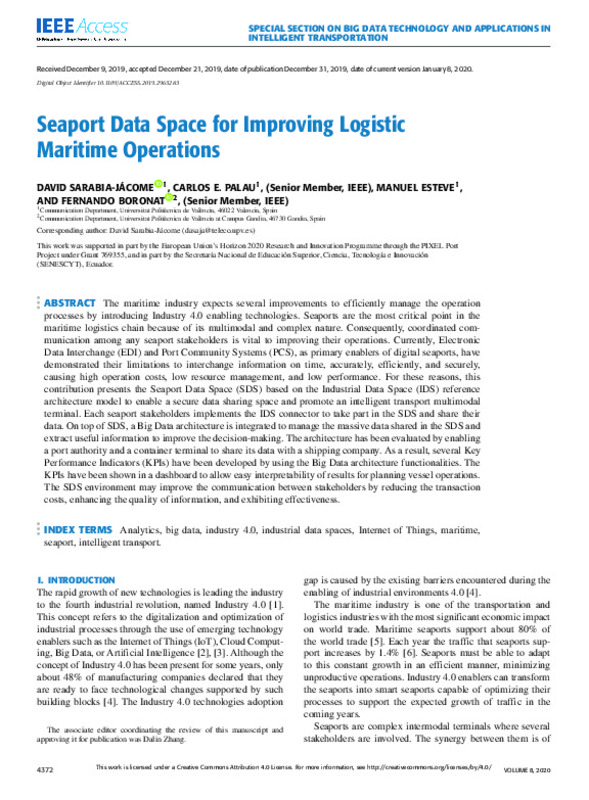JavaScript is disabled for your browser. Some features of this site may not work without it.
Buscar en RiuNet
Listar
Mi cuenta
Estadísticas
Ayuda RiuNet
Admin. UPV
Seaport Data Space for Improving Logistic Maritime Operations
Mostrar el registro completo del ítem
Sarabia-Jácome, D.; Palau Salvador, CE.; Esteve Domingo, M.; Boronat, F. (2019). Seaport Data Space for Improving Logistic Maritime Operations. IEEE Access. 8:4372-4382. https://doi.org/10.1109/ACCESS.2019.2963283
Por favor, use este identificador para citar o enlazar este ítem: http://hdl.handle.net/10251/156556
Ficheros en el ítem
Metadatos del ítem
| Título: | Seaport Data Space for Improving Logistic Maritime Operations | |
| Autor: | Sarabia-Jácome, David | |
| Entidad UPV: |
|
|
| Fecha difusión: |
|
|
| Resumen: |
[EN] The maritime industry expects several improvements to efficiently manage the operation processes by introducing Industry 4.0 enabling technologies. Seaports are the most critical point in the maritime logistics chain ...[+]
|
|
| Palabras clave: |
|
|
| Derechos de uso: | Reconocimiento (by) | |
| Fuente: |
|
|
| DOI: |
|
|
| Editorial: |
|
|
| Versión del editor: | https://doi.org/10.1109/ACCESS.2019.2963283 | |
| Código del Proyecto: |
|
|
| Agradecimientos: |
This work was supported in part by the European Union's Horizon 2020 Research and Innovation Programme through the PIXEL Port Project under Grant 769355, and in part by the Secretaria Nacional de Educacion Superior, Ciencia, ...[+]
|
|
| Tipo: |
|









